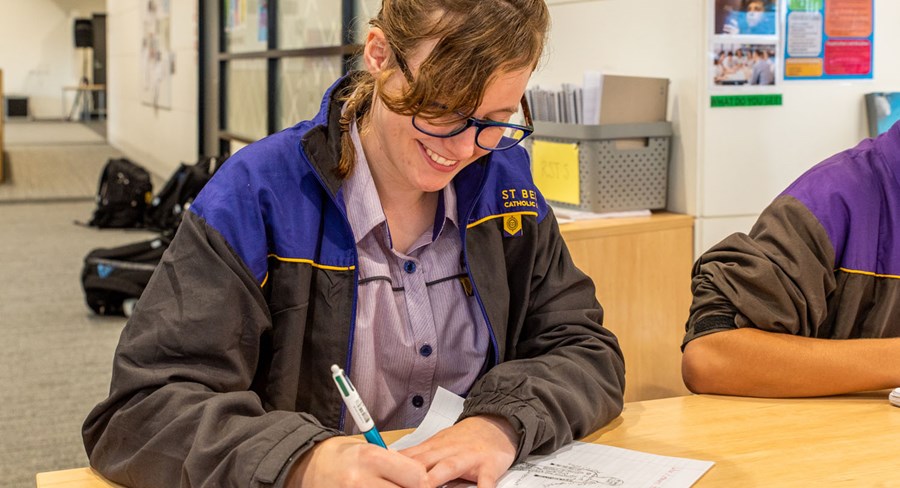
Mathematics
Mathematics in Stage 4 provides students with knowledge, skills and understanding in Number and Algebra, Measurement and Geometry, and Statistics and Probability.
Students develop a range of mental strategies to enhance their computational skills. They operate with integers, fractions, decimals and percentages, and apply these in a range of practical contexts, including problems related to GST, discounts, profit and loss. Students are familiar with the concepts of ratio and rates and apply these when solving problems.
Students extend and generalize number patterns leading into an understanding of the use of pronumerals and the language of algebra. They simplify algebraic expressions, substitute into algebraic expressions and formulas, and expand and factorise algebraic expressions. Students solve simple linear and quadratic equations. They develop tables of values from linear relationships and illustrate these relationships on the Cartesian plane, with and without the use of digital technologies.
Students calculate the perimeters and areas of a variety of polygons, circles, sectors and simple composite figures, and solve related problems. They calculate the volumes and capacities of right prisms and cylinders and solve related problems. They convert between units of area to calculate side lengths in right-angled triangles and solve problems in two dimensions. Students calculate time duration and apply their understanding of Australian and world time zones to solve problems.
Knowledge of the properties of two-dimensional geometrical figures, angles, parallel lines, perpendicular lines and congruent figures enables students to apply logical reasoning to solve numerical exercises involving unknown lengths and angles in figures.
Students construct, interpret and compare data displays, including dot plots, stem-and-leaf plots, sector graphs, divided bar graphs, and frequency tables and histograms. In analysing data, they consider both categorical and numerical (discrete and continuous) variables, sampling versus census, and possible misrepresentation of data and calculate the mean, mode, median and range. Students represent events using Venn diagrams and two-way tables and calculate the probability of simple and complementary events in single-step chance experiments.